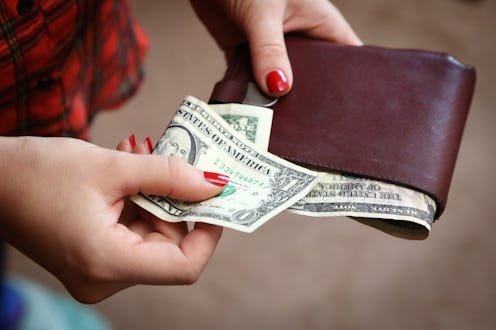Life
The Best Ways To Use Your Tax Refund

Hopefully you claimed your deductions correctly and a fat refund check is about to be yours, but have you considered the ways to use your tax refund before you accidentally blow it all? That refund isn't a gift after all, it is your own money that you overpaid and essentially loaned to the government interest-free last year. Unfortunately, how refunds arrive in a windfall isn't exactly conducive to wise spending, so your best bet is to decide what to do with it in advance. If you just deposit your tax refund check without a plan, it will burn a hole in your pocket or, worse, just drift off in $5 increments until you don't know where it went at all.
First and foremost, remember that you don't actually have to spend your refund at all — you're welcome to save it. Of the 83 percent of taxpayers who were owed refunds in 2015, just 37 percent of recipients saved their refunds, according to a report by HelloWallet. Many Millennials are failing to begin saving for retirement, in part because their employers don't offer sponsored retirement plans, but that's actually all the more reason to start saving however you can on your own.
Even if you're not sure how to save your refund, just making sure it's deposited into a savings account and not your regular day-to-day checking and debit account will be a step in the right direction. Though savings accounts typically do not offer favorable interest rates to depositors, it's better than nothing, especially if it keeps you from spending all the money.
Once the money is safely parked in your savings account, you can take your time to decide whether to invest or spend it. You could move some of the money to a brokerage account that you direct yourself. But this might not be the best option for a new investor, because individuals rarely do well enough at picking their own investments to out-perform the market in general. Instead, you could consider buying bonds, which come in various riskiness levels and pay interest periodically as well as a fixed amount at the end of their fixed lifetime.
Before you invest, it makes sense to compare your investment choices with the debt you're carrying. Credit card debt usually has notoriously high interest rates, so you might want to wipe that out first. If your credit card debt is really bad, contact the card issuer to see if they'll negotiate your total amount down in return for your payment of a lump sum (from your tax return). Repaying student loans that were issued at unsubsidized interest rates may also be financially advantageous — since you can't even usually declare bankruptcy to discharge student loans, you'll have to pay them sooner or later anyways, and the interest really adds up over time.
Still want to spend your refund? Michael Thiemann, co-founder and CEO at Zebit, suggests that you read up on how to avoid impulse purchases and steer clear of tax refund specials on big-ticket items like furniture and appliances. With the average tax refund clocking in last year at almost $3,000, retailers know that you may be jonesing to treat yourself to something big, and they stand at the ready to offer you ripoff payment plans and high-interest store loans to make those treats even bigger.
If you'll really pay off the whole balance before interest (possibly including retroactive interest) becomes due, you might carefully consider stores' lines of credit. And while you're at it, check out if you're eligible for Zebit, a new way to spread out payment for some purchases interest-free over time. Finally, make sure you're not treating shopping like a competitive sport, or shopping like it's an addiction. If you suspect that might be a case, you might want to spend your tax refund on some therapy instead.
Images: Fotolia; Giphy (3)